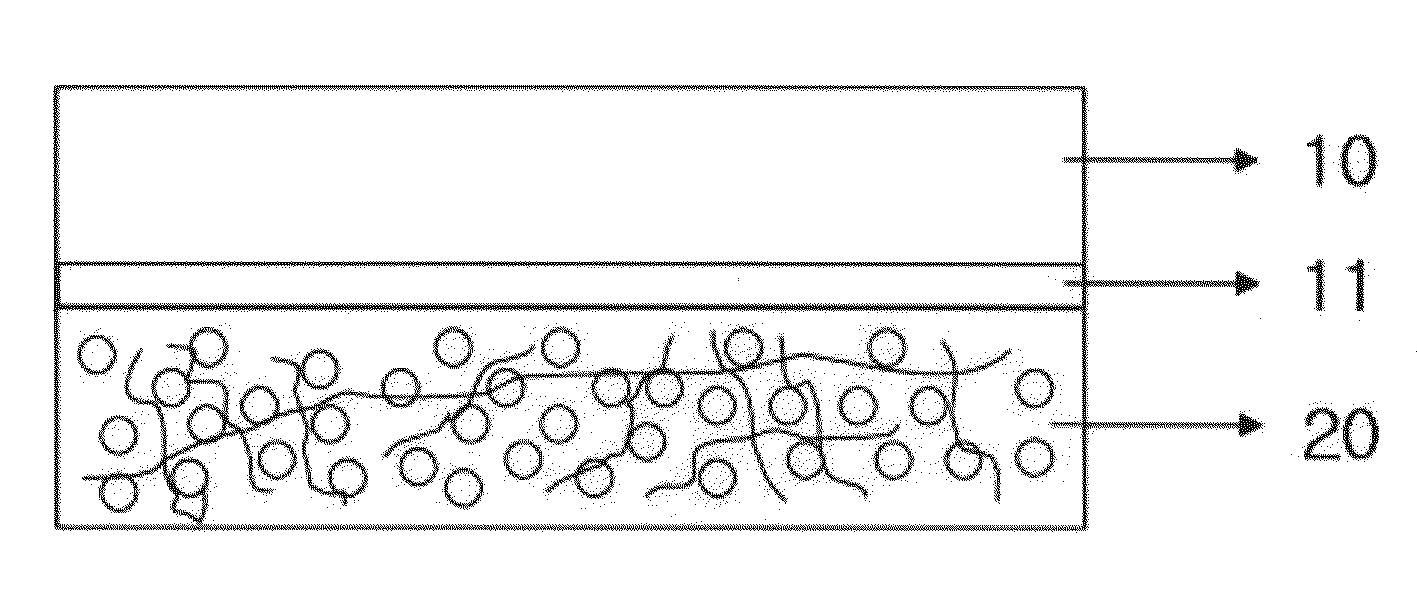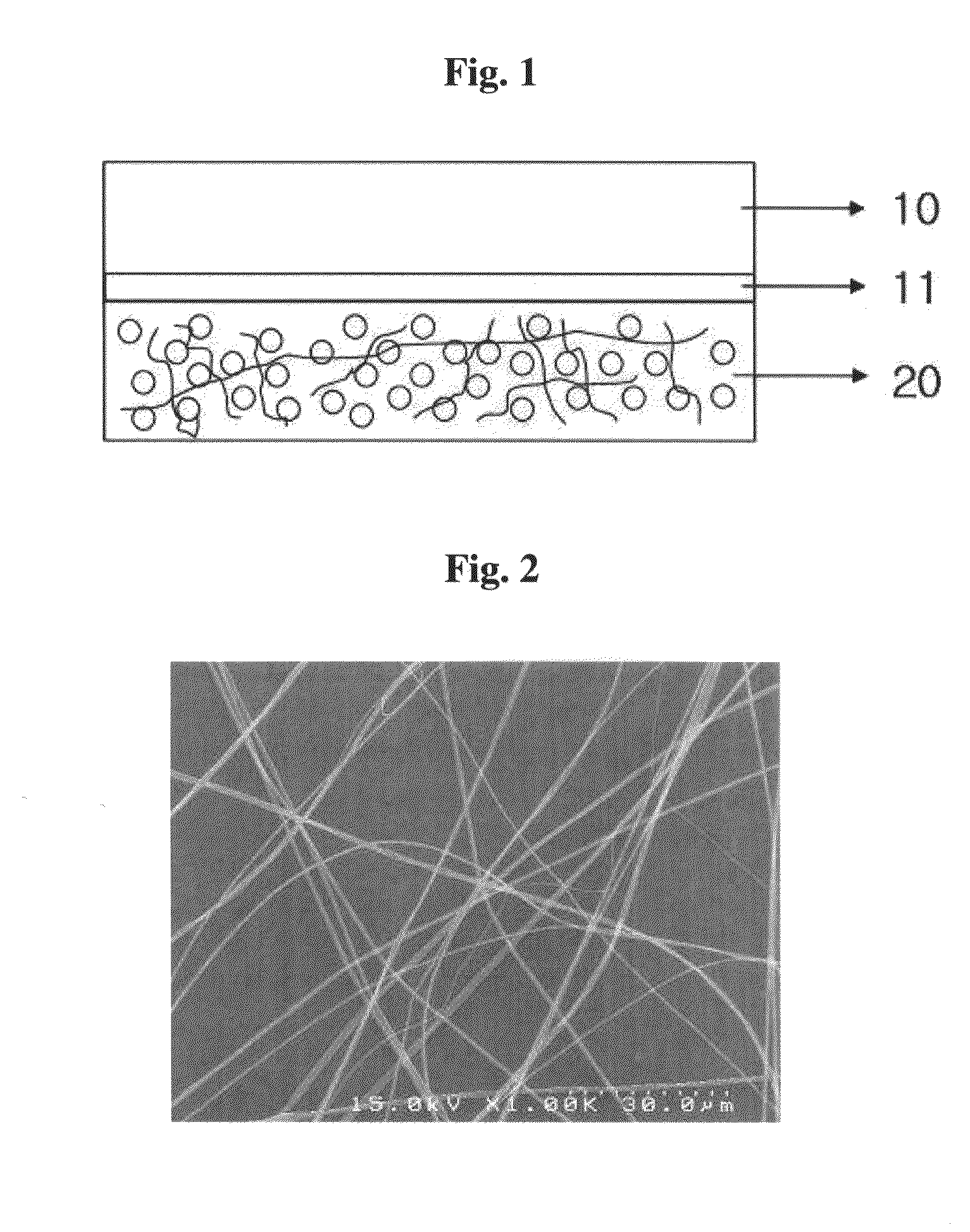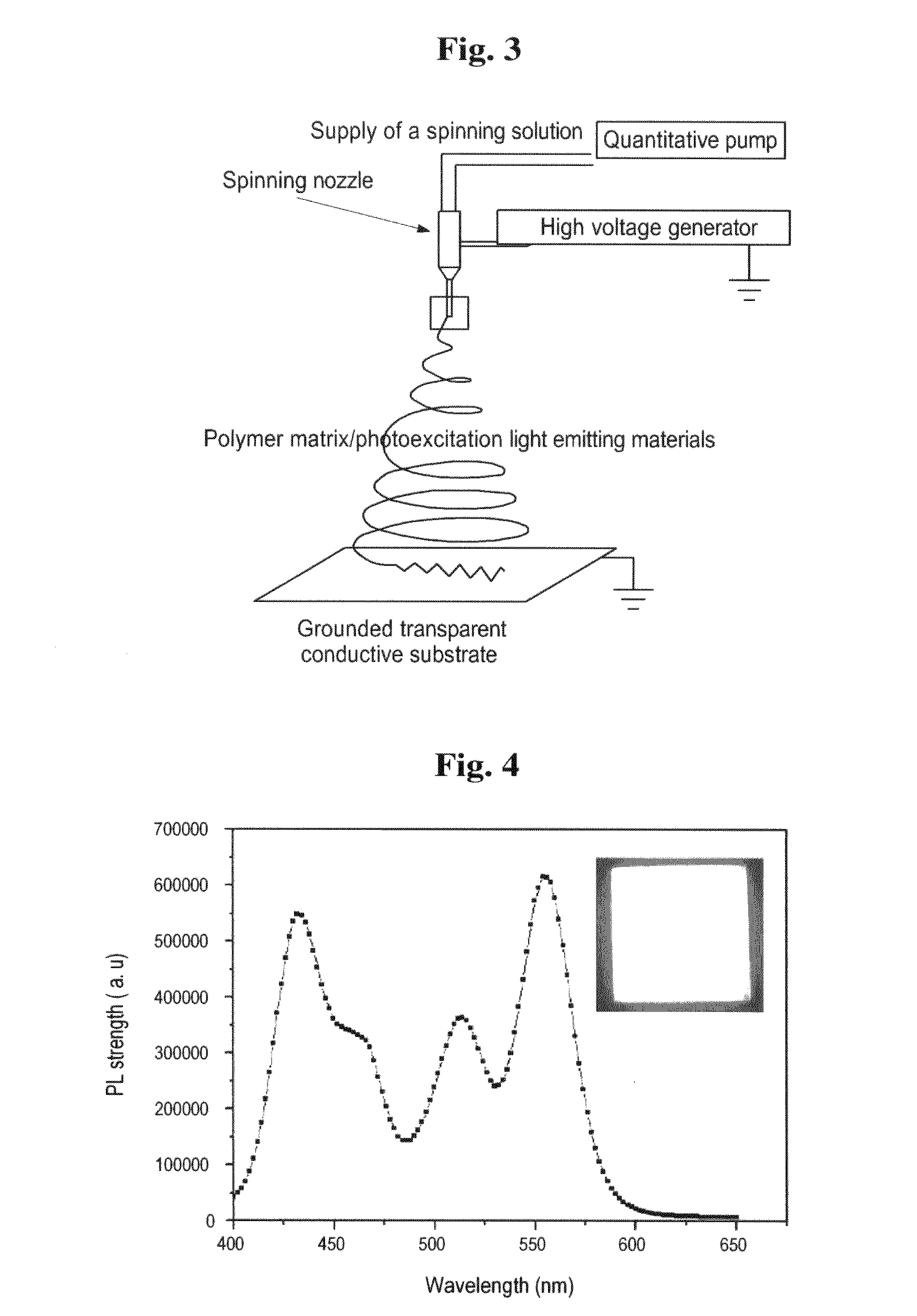White and color photoexcitation light emitting sheet and method for the fabrication thereof
- Summary
- Abstract
- Description
- Claims
- Application Information
AI Technical Summary
Benefits of technology
Problems solved by technology
Method used
Image
Examples
example 1
[0073]0.4 g of polymethyl methacrylate (PMMA, Mw 1,000,000, Aldrich) was added to 8 ml of toluene and completely dissolved at room temperature to thereby prepare a polymer solution. After a blue light emitting polymer (Dow Coming), a green wavelength quantum dot (CdSe.ZnS) and an orange wavelength quantum dot (CdSe.ZnS) were mixed in a weight ratio of 1:3:4, 0.004 g of the resulting mixture was added to the polymer solution and completely dissolved under stirring by means of a magnetic bar at room temperature. The resulting mixture was subjected to ultrasonic dispersion for 1 hour, to thereby prepare a spinning solution. The thus prepared spinning solution was subjected to electrospinning onto the surface of a transparent conductive substrate, to thereby form an ultrafine composite fiber layer of the polymethyl methacrylate / photoexcitation white light emitting materials. FIG. 2 depicts the surface of the ultrafine composite fiber layer formed above observed with a scanning electron ...
example 2
[0075]0.4 g of polymethyl methacrylate (PMMA, Mw 1,000,000, Aldrich) was added to 8 ml of toluene and completely dissolved at room temperature, to thereby prepare a polymer solution. After a blue light emitting polymer (Dow Corning), a green wavelength quantum dot (CdSe.ZnS) and an orange wavelength quantum dot (CdSe.ZnS) were mixed in a weight ratio of 1:3:3.6, 0.004 g of the resulting mixture was added to the polymer solution and completely dissolved under stirring by means of a magnetic bar at room temperature. The resulting mixture was subjected to ultrasonic dispersion for 1 hour, to thereby prepare a spinning solution. The thus prepared spinning solution was subjected to electrospinning onto the surface of a transparent conductive substrate, to thereby form an ultrafine composite fiber layer of the polymethyl methacrylate / photoexcitation white light emitting materials.
[0076]The electrospinning was carried out under the same conditions as described in Example 1 above. As a resu...
example 3
[0077]0.4 g of polymethyl methacrylate (PMMA, Mw 1,000,000, Aldrich) was added to toluene 8 ml and completely dissolved at room temperature, to thereby prepare a polymer solution. After a green wavelength quantum dot (CdSe.ZnS) and an orange wavelength quantum dot (CdSe.ZnS) were mixed in a weight ratio of 1:1.2, 0.004 g of the resulting mixture was added to the polymer solution and completely dissolved under stirring by means of a magnetic bar at room temperature. The resulting mixture was subjected to ultrasonic dispersion for 1 hour, to thereby prepare a spinning solution. The thus prepared spinning solution was subjected to electrospinning onto the surface of a transparent conductive substrate, to thereby form an ultrafine composite fiber layer of the polymethyl methacrylate / photoexcitation white light emitting materials.
[0078]The electrospinning process was carried out by using an electrospinning device as illustrated in FIG. 3. In the electrospinning device, an ITO layer oppos...
PUM
| Property | Measurement | Unit |
|---|---|---|
| Thickness | aaaaa | aaaaa |
| Diameter | aaaaa | aaaaa |
| Moment of inertia | aaaaa | aaaaa |
Abstract
Description
Claims
Application Information
 Login to View More
Login to View More - R&D
- Intellectual Property
- Life Sciences
- Materials
- Tech Scout
- Unparalleled Data Quality
- Higher Quality Content
- 60% Fewer Hallucinations
Browse by: Latest US Patents, China's latest patents, Technical Efficacy Thesaurus, Application Domain, Technology Topic, Popular Technical Reports.
© 2025 PatSnap. All rights reserved.Legal|Privacy policy|Modern Slavery Act Transparency Statement|Sitemap|About US| Contact US: help@patsnap.com



